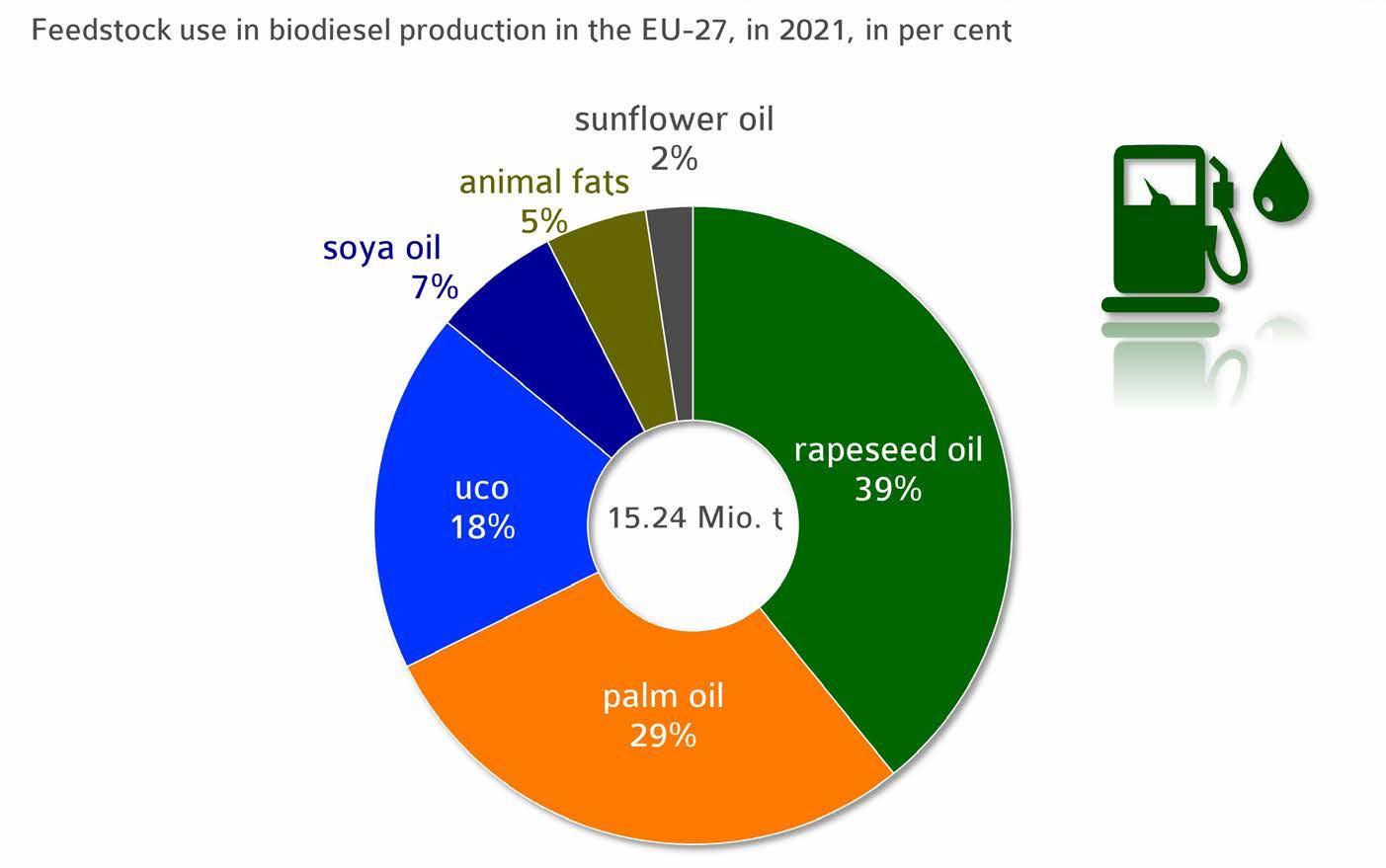
2 minute read
2.1 Which countries promote biofuels?
» 2.1.2 Global output of biodiesel
2.1.2.1 Major biodiesel producers in the EU-27
Advertisement
Germany remains the largest biodiesel producer in the EU © AMI 2022
Sources: FAS, Oil World
2.2 What feedstocks are used in world biofuels production?
» 2.2.1 Global resource bases for biodiesel
Production of biodiesel has slightly increased all over the world and, as a result, so has demand for feedstock, the use of which rose just under 4 per cent from 2020 to 2021. Although the volumes have slightly changed, the ranking has remained unchanged: palm oil accounts for 35 per cent, whereas soybean oil makes up 25 per cent, as it did the previous year. Rapeseed oil accounts for 15 per cent and animal fats for 7 per cent. The share of used cooking oil (UCO) is at 12 per cent, that of “other oils” at 6 per cent. Their shares will most probably continue to increase, because they also include effluent from palm oil mills (POME). North and South America as well as Southeast Asia are expected to see a further increase in biodiesel production from soybean and palm oil. In the EU-27, the proportion of biodiesel from rapeseed oil and waste oils and fats is expected to climb, especially at the expense of palm oil. In Germany as of 2023, biofuels from palm oil can no longer be credited towards quota obligations – as is already the case in other EU member states (France, Sweden, Austria, Belgium, Denmark, ...). It remains to be seen whether rapeseed oil will have a part in covering this shortfall, because member states are allowed to adjust the mandates for biofuels from cultivated biomass. However, due to the genetic fatty acid structure of rapeseed oil, rapeseed oil-based biodiesel has the advantage of providing better winter diesel fuel quality. In the winter months, rapeseed oil is needed as a feedstock in any production of biodiesel (FAME) for use in blends.
More soybean oil, less palm oil

2.3 What feedstocks are used in European biodiesel fuel production?
» 2.3.1 Resource bases for biodiesel in the EU-27
Availability and selling prices of vegetable and animal oils and fats have a determining influence on the use in biodiesel fuel production. Rapeseed oil remains the primary feedstock source for biodiesel production in the European Union, accounting for 39 per cent. As a consequence of higher prices and tight supply of used cooking oil in the wake of the coronavirus shutdown of the food service industry (which also had implications for imports from China), demand for rapeseed oil is expected to increase in 2023. Consequently, the proportion of used cooking oil is only 18 per cent. At the EU level, policymakers have been promoting the use of UCO, e.g. by introducing quota requirements for biokerosene (not in Germany). However, at the same time a cap of 1.9 per cent of final energy consumption in road and rail transport applies throughout the EU. With the exception of Germany, biofuels from waste oils and fats are credited double towards national quota obligations (energy-related). All member states are required to establish a binding 10 per cent share of renewable energy in the transport sector by 2021 and a 14 per cent share by 2030.

However, it must be noted that the statistical basis for the share of feedstock is very different depending on the “source” and cannot be adopted uncritically. The reporting and documentation requirements will be tightened under the revised Renewable Energy Directive (2018/2001/EU, Red II). A European database similar to the German database Nabisy will be put in place. The concrete basic statistical information necessary to measure the “iLUC effect” remains lacking to date.
Share of sunflower oil decreases significantly, more rapeseed oil instead
© AMI 2022 | Source: Oil World









